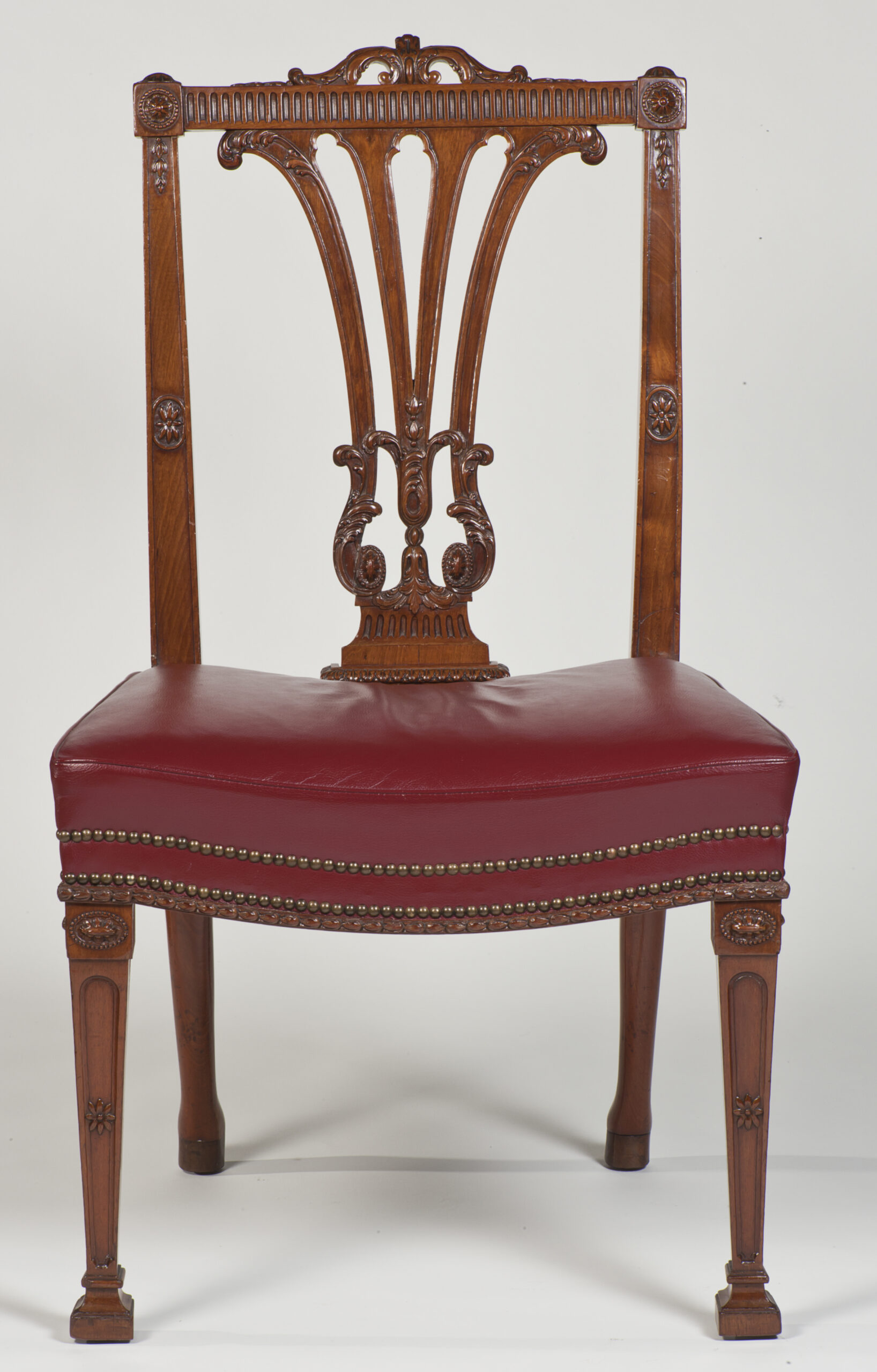This chair, part of a set of 20, was made by Thomas Chippendale for the State Dining Room at Harewood House, delivered in around 1771. Its design represents the height of fashion in mid-late 18th century English dining furniture, with a neo-Classical frame decorated with carved ornament such as acanthus leaves, fluting and bell flowers. The seat is upholstered in leather, often utilised on dining furniture for its durability and practical qualities.
The frame of the chair is made of mahogany – a popular material used for furniture-making in England from the 1720s, highly prized for its naturally rich colouring, fine figuring (graining) and strength. Mahogany is particularly workable, allowing cabinet-makers to carve intricate designs into its surface, lending itself to the highly decorative cabinet-making tradition of the 18th century.
But the procurement of this versatile and beautiful material came at a human cost, and its history is intertwined with that of the transatlantic slave trade. Following the arrival of the first European colonists in the West Indies and Central Americas in the early 17th century, huge swathes of native timber was felled across the region. Initially this took place to clear land for sugar plantations, but the inevitable recognition of the remarkable qualities of mahogany generated an export market for the raw material itself.
The significant amount of labour needed to log mahogany trees came from enslaved Africans brought to the West Indies and Central America by European traders. It was dangerous and physically brutal work. Working in groups of between 10-50, enslaved woodcutters would embark upon forest expeditions to cut and log trees, clear roads and transport raw material back to coastal ports via rivers. A description of the logging process of Honduran mahogany written in 1873 by a British cabinet-maker paints a bleak picture of the working conditions for the individuals involved:
The labour of loading and driving, on account of the intense heat of the sun during the day, must be performed in the night-time, and by torch light…[T]he great number of oxen—the half naked drivers, each bearing a torch—the wildness of the forest scenery—the rattling of the chains, and cracking of the whips—and all of this at the hour of midnight, present…the sober industrial pursuit which has fallen to the lot of the wood-cutters of Honduras. (1)
There were also devastating ecological consequences to the extensive deforestation of the Caribbean region. As a direct result of large-scale sugar production and the systematic exploitation of slave labour, numerous West Indian islands experienced the swift extinction of mahogany and other native trees. Diverse forests were replaced by agricultural monocultures and microclimates that would go on to cause severe problems with drought and erosion.
When studying Harewood’s history and collection, it is important to consider and reflect upon the devastating socio-economic context that it was a product of. Despite their elegance, Harewood’s dining room chairs – as well as the many other pieces of mahogany furniture designed to sit alongside them – are inseparably linked to Britain’s merciless colonial past. To find out more about the building of Harewood House and its links to the slave trade, visit our Building Harewood digital guide.
(1) Thomson, The Cabinet-maker’s Assistant: A Series of Original Designs for Modern Furniture (London: Blackie and Son, 1873), 28-29.
